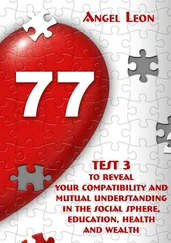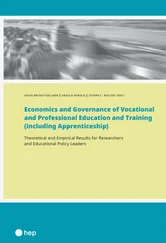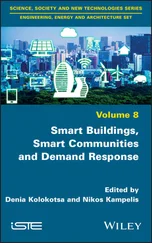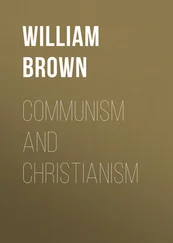2 Non-formal education. This is education that is ‘institutionalised, intentional, and planned by an education provider’ – sometimes called ‘extra-curricular activities’ – and is still related to the formal education system. For disaster education, it could be a safety demonstration to schools or a Massive Open Online Course (MOOC) linked to a university. ‘It is typically provided in the form of short courses, workshops or seminars.’
3 Informal education. ‘Informal learning is defined as forms of learning that are intentional or deliberate, but are not institutionalised.’ ‘Informal learning may include learning activities that occur in the family, workplace, local community and daily life, on a self-directed, family-directed or socially-directed basis.’ Examples of informal learning related to disaster education include using social media to learn more about a disaster, attending a community meeting called after an emergency, and participating in an emergency training course.
4 Incidental or random education. These are ‘various forms of learning that are not organised or that involve communication not designed to bring about learning’. They ‘may occur as a by-product of day-to-day activities, events or communication that are not designed as deliberate educational or learning activities’. This type of learning could include watching or listening to a news broadcast that includes details of a disaster, receiving an early warning emergency message, or reading an article about emergency preparedness in a magazine.
As part of lifelong learning, people may learn across the four different modes of education. Generally, formal and non-formal education is more experienced by those under 30 years old. Both informal and incidental education is obtained by all ages.
Shaw et al. (2011) conducted a literature review of global disaster education activities in the categories of formal, non-formal, and informal education. Most of the disaster education activities they reviewed were either in the formal or non-formal modes. This trend is supported by the majority of disaster education research being in the school setting ( Chapter 11).
However, informal education has particular appeal to disaster learning for all ages. Informal education can occur in a range of settings such as the home, school, job, and in small groups such as community organisations (Knowles 1950). It is viewed as a critical component of lifelong learning (Hager 2001).
According to Feng et al. (2018), informal learning makes it easier to appreciate how disaster education ‘can be integrated into community and community processes, particularly with regard to the need to personalize education in ways that facilitate its applicability to the local contexts in which people experience hazard events’.
2.1.3 Learning Relationships
Education has traditionally been seen as a pedagogic relationship between the teacher and the learner. It was always the teacher who decided what the learner needed to know and, indeed, how the knowledge and skills should be taught. For disaster education, ‘pedagogy’ relates to formal and non-formal learning modes usually with children through a prescribed curriculum or course.
Knowles (1970) distinguished between how adults and children learn and coined the term ‘andragogy’. It is based on the premise that adults are independent and strive for autonomy and self-direction. Andragogical learning is task or problem centred.
Andragogy was an important landmark in teaching and learning practices in vocational education and training and in higher education. The principles of adult learning that were derived from it transformed face-to-face teaching and provided a rationale for distance education based on the notion of self-directedness. However, it still has connotations of a teacher–learner relationship.
For disaster education, andragogical learning generally fits within the non-formal learning mode, as for adult education there are course requirements. For higher education courses, disaster-related education (e.g. degrees in emergency management, MOOCs) mainly follows pedagogical principles.
Much of the disaster-related learning is provided by emergency agencies for at-risk people and their communities. As discussed earlier, this is usually conducted through informal learning, although delivered in a pedagogical manner, i.e. in a way similar to a teacher–pupil relationship where the agency ‘knows best' and provides the required knowledge and skills.
Due to the power in disaster education emanating largely from government emergency agencies through pedagogical practices, some people can be excluded or feel disillusioned with learning. For example, Preston (2012) posits that ‘there are both tacit and overt reasons why disaster education shares racial inequalities in common with other forms of formal (and informal) education’. He shows that although there are diverse forms of disaster education they are inextricably linked to a range of inequalities in society.
One way to counter this power inequality issue is through another learning relationship. ‘Heutagogy’ is the study of self-determined learning and draws together some of the ideas presented by these various approaches to learning. It is also an attempt to challenge some ideas about teaching and learning that still prevail in teacher-centred learning and the need for ‘knowledge sharing’ rather than ‘knowledge hoarding’.
Rogers (1969) suggests that people want to learn and have a natural inclination to do so throughout their life. Indeed, he argues strongly that teacher-centred learning has been grossly overemphasised.
A heutagogical approach recognises the need to be flexible in the learning where the ‘teacher’ provides resources but the learner designs the actual course he or she might take by negotiating the learning. Thus, learners might read around critical issues or questions and determine what is of interest and relevance to them, and then negotiate further reading and assessment tasks.
The heutagogical approach has potential for disaster learning as it relates to informal and incidental education. It ties well with the concept of ‘shared responsibility’ (Council of Australian Governments 2011) where both emergency agencies and at-risk people have responsibilities before, during, and after disasters. Coupled with these responsibilities is the requirement for people to learn themselves, although there will be times (e.g. early warning) when emergency agencies need to provide direct advice (e.g. the need to evacuate).
2.2 Disaster Communication
Communication is the act of transferring information from one place to another. It can denote two different processes:
the transmission of information (a one-way process)
sharing information (a common or mutual process).
In disaster management, the transmission model (one-way process) is primarily used where there is information disseminated by emergency agencies for alerts and warnings. In contrast, the idea of sharing information implies a common or mutual process. The use of social media as an emergency communication tool inherently involves two-way information sharing.
Disaster communication can be categorised according to the length of the communication period. ‘Acute’ communication occurs during emergencies where there is a need for rapid dissemination of lifeline information. On the other hand, ‘long-term’ communication occurs over an extended period prior to and after emergency events or disasters, e.g. disaster risk reduction, post-disaster reconstruction.
However, according to Steelman and McCaffrey (2013), the two fields that best inform communication thinking for a hazard are risk communication and crisis communication.
Читать дальше












